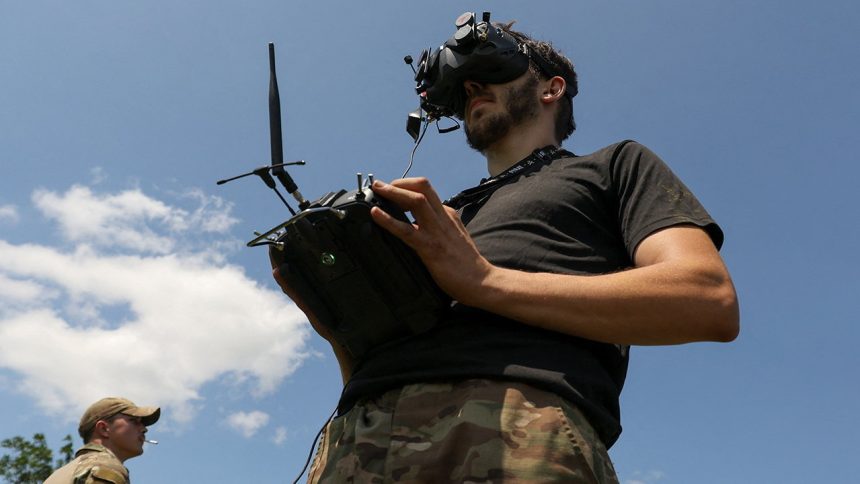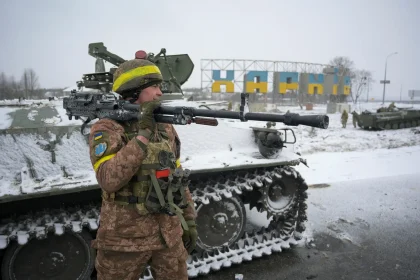When war forces people into survival mode, innovation often comes from the most unexpected places. Ukrainian Volunteers Turn Vapes into Power Sources for Drones, and in doing so, they’ve sparked global attention. What once seemed like disposable gadgets of leisure are now being repurposed into life-saving tools on the battlefield. This unusual transformation tells a story not just about technology but also about resilience, resourcefulness, and the human will to adapt in times of crisis.
How Ukrainian Volunteers Turn Vapes into Power Sources for Drones
At first glance, it sounds almost absurd—how could an e-cigarette or vape pen, typically associated with smoking alternatives, become useful in war? Yet, this is exactly what Ukrainian volunteer engineers and technicians have accomplished. By dismantling and modifying the lithium-ion batteries inside disposable vapes, they have discovered a way to recharge and power small drones that are critical in Ukraine’s defense efforts.
Drones, whether used for reconnaissance or light strike missions, require steady energy supplies. With traditional power sources running low due to constant demand and disrupted supply lines, volunteers had to think creatively. That’s when they realized that the lithium-ion batteries found inside vapes could be salvaged and re-engineered for a military purpose.
Why Vapes? The Science Behind the Innovation
Vapes contain rechargeable lithium-ion batteries that are lightweight yet powerful enough to provide significant bursts of energy. These same qualities make them perfect candidates for powering small, agile drones.
Voltage Output: Vape batteries typically run between 3.7 to 4.2 volts, aligning well with drone requirements.
Compact Size: They are small enough to fit into the lightweight drone framework.
Rechargeability: Despite being marketed as “disposable,” most vape batteries can be recharged and reused once removed.
In essence, what Ukraine’s volunteers are doing is part recycling, part battlefield innovation. In a country where every resource counts, the adaptation of vape batteries has added a new dimension to wartime ingenuity.
The Urgency: Why Ukraine Needs Alternative Power Sources
Ukraine’s war effort relies heavily on drones. From spotting Russian troop movements to targeting artillery positions, drones act as the eyes and ears of the Ukrainian military. But these drones are only as effective as their power supply.
- Traditional supply chains for drone batteries have been disrupted due to:
- Constant Russian missile strikes on infrastructure and logistics hubs.
- High demand—thousands of drones are deployed across the frontlines every day.
- Economic costs—importing specialized drone batteries is expensive.
This is where the creativity of ordinary citizens and volunteers steps in. By repurposing something as widespread as vape batteries, Ukraine has found a grassroots solution to a nationwide problem.
From Civilian Gadgets to Weapons of War
The story of Ukrainian Volunteers Turning Vapes into Power Sources for Drones reflects a broader theme of civilian technology being militarized during wartime. Everyday items—from smartphones to gaming consoles—have been transformed into tools of resistance.
In this case, vapes, a symbol of modern consumer culture, are now fueling military technology. A soldier on the frontline was quoted in Ukrainian media saying:
“Every drone in the sky may be the difference between life and death. Knowing that a vape battery powers it shows how creative and determined we are.”
Volunteer Networks Driving the Innovation
Much of this work is being carried out by decentralized volunteer networks across Ukraine. These groups consist of engineers, hobbyists, mechanics, and even teenagers who gather vape waste and reassemble the batteries into power packs.
Collection Drives: Volunteers gather discarded vapes from cities, recycling centers, and even donations from abroad.
Workshops: Small local workshops rewire the batteries, testing their capacity and safety.
Distribution: The modified batteries are sent to the frontlines where drone units are active.
This grassroots model bypasses bureaucratic delays and allows Ukrainians to directly support their soldiers with meaningful contributions.
Stats: The Scale of Vape Battery Repurposing
- While exact figures are hard to come by, reports from Ukrainian volunteer organizations suggest:
- Tens of thousands of vape batteries have already been collected.
- A single modified battery can power a small drone for 20–40 minutes, depending on the weight carried.
- Each workshop is capable of producing dozens of power packs per week, depending on volunteer manpower.
- This may not seem like much compared to industrial battery production, but in a war of attrition, even small contributions add up.
The Environmental Angle: Recycling as Resistance
Interestingly, the reuse of vape batteries has a double benefit. Not only does it fuel the Ukrainian resistance, but it also tackles one of the fastest-growing waste problems in the world—discarded e-cigarettes.
Environmental watchdogs estimate that over 150 million disposable vapes are thrown away annually in Europe alone. By giving these batteries a second life, Ukraine is inadvertently setting an example of circular economy practices in the most unexpected way.
Expert Opinions: The Role of Civilian Tech in Modern Warfare
- Military analysts see this as more than a quirky headline. It reflects a deeper shift in the nature of modern conflicts:
- Dual-use Technology: Civilian tech, from batteries to 3D printers, is increasingly adapted for the battlefield.
- People’s War: Wars are no longer fought by armies alone. Civilian involvement in tech innovation is changing the landscape.
- Asymmetrical Edge: Ukraine’s ability to improvise gives it an advantage against a militarily superior Russia.
- As defense expert Michael Clarke noted in a recent think tank briefing:
“The Ukraine war has shown us that the line between civilian and military technology is blurrier than ever before.”
Risks and Challenges of Vape-Powered Drones
- While inspiring, this innovation is not without challenges:
- Safety Concerns: Vape batteries can overheat or explode if improperly handled.
- Limited Lifespan: Salvaged batteries may not last as long as factory-made drone batteries.
- Scale Limitations: Vape batteries work for small drones, but larger military drones require more robust power solutions.
Despite these issues, the benefits far outweigh the risks, particularly given Ukraine’s desperate need for cost-effective solutions.
Global Reactions and Symbolism
Around the world, this story has been covered not just as a war update but as a symbol of human resilience. International outlets highlight how Ukraine’s ability to innovate under fire is part of why it continues to hold ground against Russia.
For Ukrainians, it is also a morale booster—a reminder that even small acts, like donating a used vape, can contribute to the larger fight for independence.
Storytelling: A Volunteer’s Perspective
Olena, a 23-year-old engineering student in Kyiv, spends her weekends in a workshop rewiring vape batteries. She explains:
“At first, my friends laughed when I said I was working with e-cigarettes for the war effort. But when I saw a video of a drone powered by our battery helping soldiers on the frontline, I realized we are saving lives.”
Her story is one among thousands that show the power of collective effort in times of crisis.
FAQs
Why are Ukrainians using vape batteries for drones?
Because supply chains for drone batteries are disrupted, volunteers are repurposing vape batteries as a cost-effective and accessible alternative.
How effective are vape batteries in drones?
They are effective for small drones, giving 20–40 minutes of flight time, but are less suitable for larger military drones.
Are vape-powered drones safe?
There are risks, such as overheating, but volunteers take precautions by testing and rewiring batteries carefully.
How many vape batteries are being used?
Tens of thousands have already been collected and repurposed, with numbers growing every week.
What does this innovation symbolize?
It represents Ukrainian resilience, creativity, and the civilian role in modern warfare.
Conclusion:
The story of how Ukrainian Volunteers Turn Vapes into Power Sources for Drones is more than a quirky wartime anecdote. It’s a testament to the creativity, resilience, and resourcefulness of ordinary people under extraordinary circumstances.
From environmental benefits to tactical advantages, this innovation demonstrates that in modern warfare, even the smallest gadgets can play a critical role. It also highlights a broader lesson: resilience often emerges not from abundance, but from scarcity.













